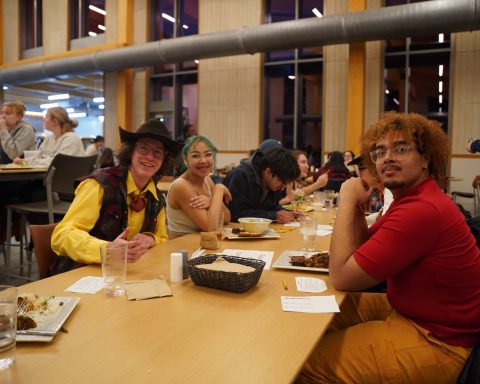Editor’s note: This article was initially published in The Daily Gazette, Swarthmore’s online, daily newspaper founded in Fall 1996. As of Fall 2018, the DG has merged with The Phoenix. See the about page to read more about the DG.
At 1542 students, Swarthmore College is at its largest size in its 150-year history, according to the 2014-2015 Common Data Set. Swarthmore has long been one of the smallest institutions within its peer group.
While Swarthmore’s average enrollment has decreased relative to 23 institutions the College identified as peers in the Strategic Directions document, the College sees no reason to abandon its continued pattern of slow, modest growth.
There are incentives for small liberal arts colleges such Swarthmore to expand their enrollment. Many peer institutions increase in size due to heightened expectations from students and faculty, including upgraded technology and facilities, non-academic programming, and more sustainable campus structures.
“We also always want to be, always will be a residential liberal arts college,” said Vice President and Dean of Admissions Jim Bock ’90. “[The College] is looking to admit, not deny. So by giving us some more space, hopefully we’ll just be able to admit more future Swatties, and I think that’s a good thing. I’m not for growth for growth’s sake, but I do think that many people would benefit by the Swarthmore experience.”
However, even if the College maintains its modest growth rate, the limitations of current dining and housing facilities to adequately serve the student body will be tested.
“[Expansion] would be difficult for us […] sometimes, you can’t get a seat—I mean, I’ve been out there, and I’ve seen kids sitting on the fireplace hearth. You’re paying all that money, and you don’t have a chair to sit in? Come on!” said Dining Services Director Linda MacDougall, regarding Sharples’s ability to meet the needs of the growing student body. “We just have to keep trying to think about being creative with what we have to work with.”
The recent Campus Master Plan proposed a multitude of building projects to alleviate the strain on current facilities. Some of these, such as the Matchbox and the connection between Dana and Hallowell halls, are completed or well underway. Proposed additions for the future include a several new off-campus residence halls, a new Biology, Engineering, and Psychology building, and expansions to the West and South ends of Sharples.
Both the Campus Master Plan and administrators indicate that the College is firmly committed to remaining small in relation to its peers.
“We don’t want to grow too fast. We also want to pay as we go—that’s one of the principles at the end of [the Strategic Plan], is that we do this strategically and fiscally responsibly, which I think is important, which Swarthmore has always done,” said Bock.
“The goal is to remain the smallest or one of the smallest schools within our peer group. So even though we have growth, we’re not trying to grow a lot. Maybe 10 students a year over the next 10 or 20 years of the life of the plan. But we’re going to go for a year at a time.”
















